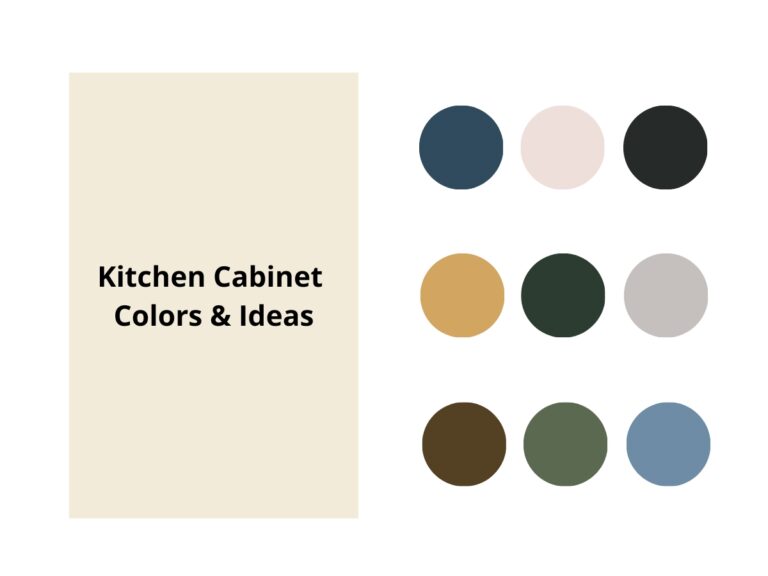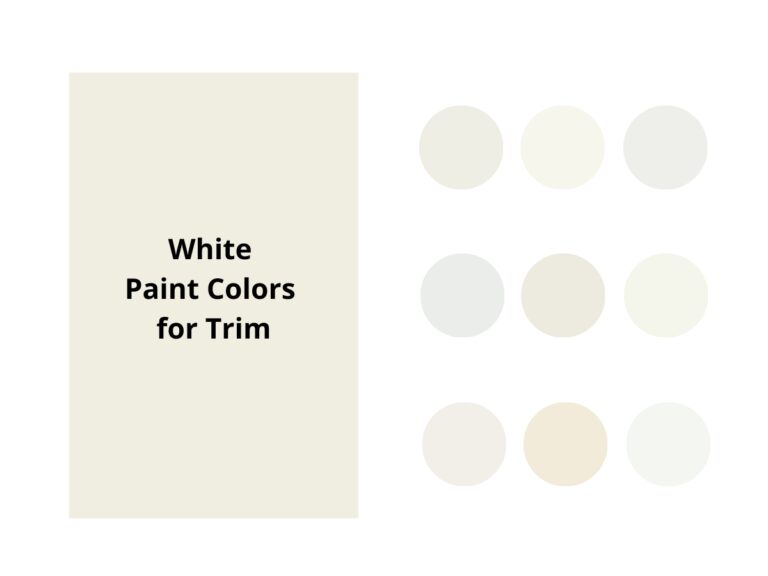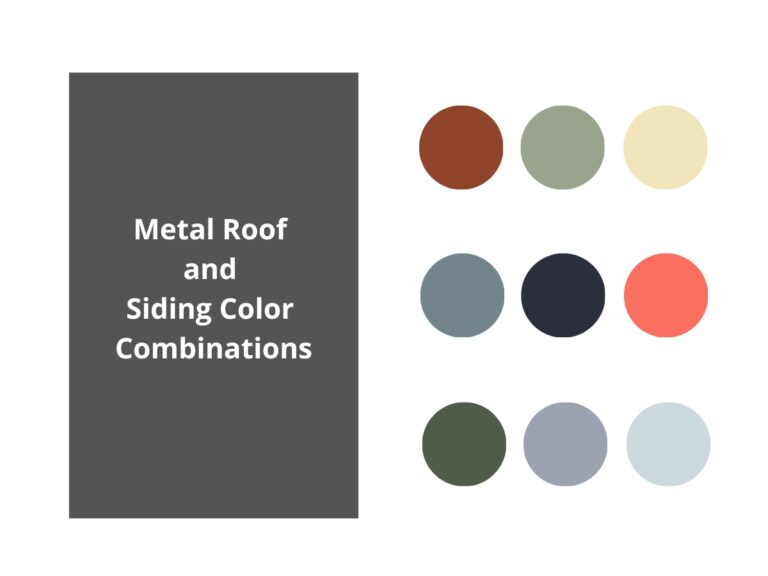Thinking about painting your basement? It might seem straightforward, but don’t be fooled! Basements are a whole different ball game compared to regular rooms – you’re dealing with limited natural light and higher humidity levels.
Here’s a common trap many homeowners fall into: they pick colors just like they would for their upstairs rooms, then wonder why their basement feels dark and uninviting. But here’s the thing – choosing the right color can completely transform your basement from a gloomy space into a cozy spot perfect for relaxing, watching movies, or even working out.
Let’s dig into which paint colors will help you create the perfect vibe you’re looking for in your basement and what you need to remember when choosing.
- How to Choose a Basement Paint Color
- 1. White Dove by Benjamin Moore
- 2. Agreeable Gray by Sherwin Williams
- 3. Sea Salt by Sherwin Williams
- 4. Peppercorn by Sherwin Williams
- 5. Mindful Gray by Sherwin Williams
- 6. Manchester Tan by Benjamin Moore
- 7. Stonington Gray by Benjamin Moore
- 8. Pebble Beach by Benjamin Moore
- 9. Abalone by Benjamin Moore
- 10. Slate Teal by Benjamin Moore
- 11. Cloud White by Benjamin Moore
- 12. Muslin by Benjamin Moore
- 13. Cultured Pearl by Sherwin Williams
How to Choose a Basement Paint Color
I’ve noticed a funny pattern over my years of working with basements – most homeowners play it safe and stick to pure white, afraid to try anything else.
But pick the right color, and you can turn your basement into the coziest spot in your home!
Basic Principles
- Warm light shades (think ivory, sandy, or light beige) help warm up the space and make up for the lack of natural light
- For rooms with low ceilings, try this trick: go lighter on top and gradually darker as you move down
- Want to make your space feel bigger? Use different shades of the same color – it ties everything together
By Room Purpose
- Home theater: go for deep blues, charcoal grays, or dark browns
- Kids’ room/playroom: soft mint, peach, or lavender create a fun vibe
- Guest bedroom: stick to neutrals (warm gray, light taupe) with one wall in a bolder version of your chosen shade
1. White Dove by Benjamin Moore

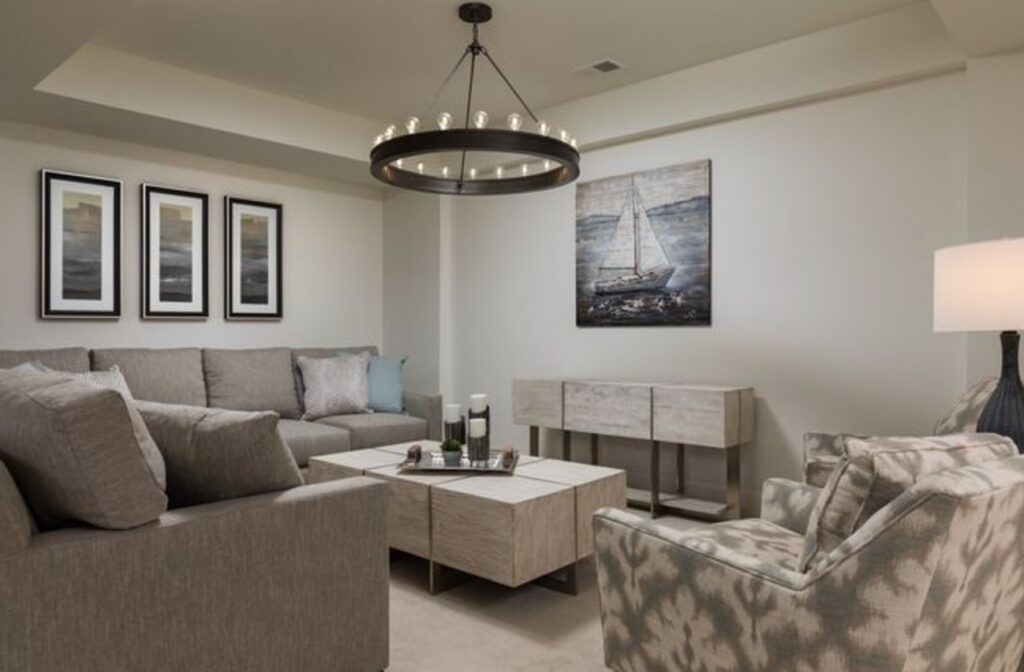
White Dove by Benjamin Moore is a real winner for basements. Unlike stark whites that can look flat and lifeless without natural light, White Dove keeps its warmth even under artificial lighting.
What I love about this shade is its subtle yellow undertones – they’re so soft you barely notice them. With an LRV of 83.16, it bounces around enough light to keep things bright without that harsh, reflective glare.
It really shines in basements – unlike some whites that go gray in shadows, this one holds its own thanks to its pigmentation. That’s huge for spaces where you’re working with limited daylight, like when you’ve just got a small window or glass door to work with.
It’s super versatile too – looks great in any finish, from matte on the ceiling to satin on trim and doors. Plus, White Dove plays nice with both bold accent colors and neutral palettes, just like in the photo above.
2. Agreeable Gray by Sherwin Williams

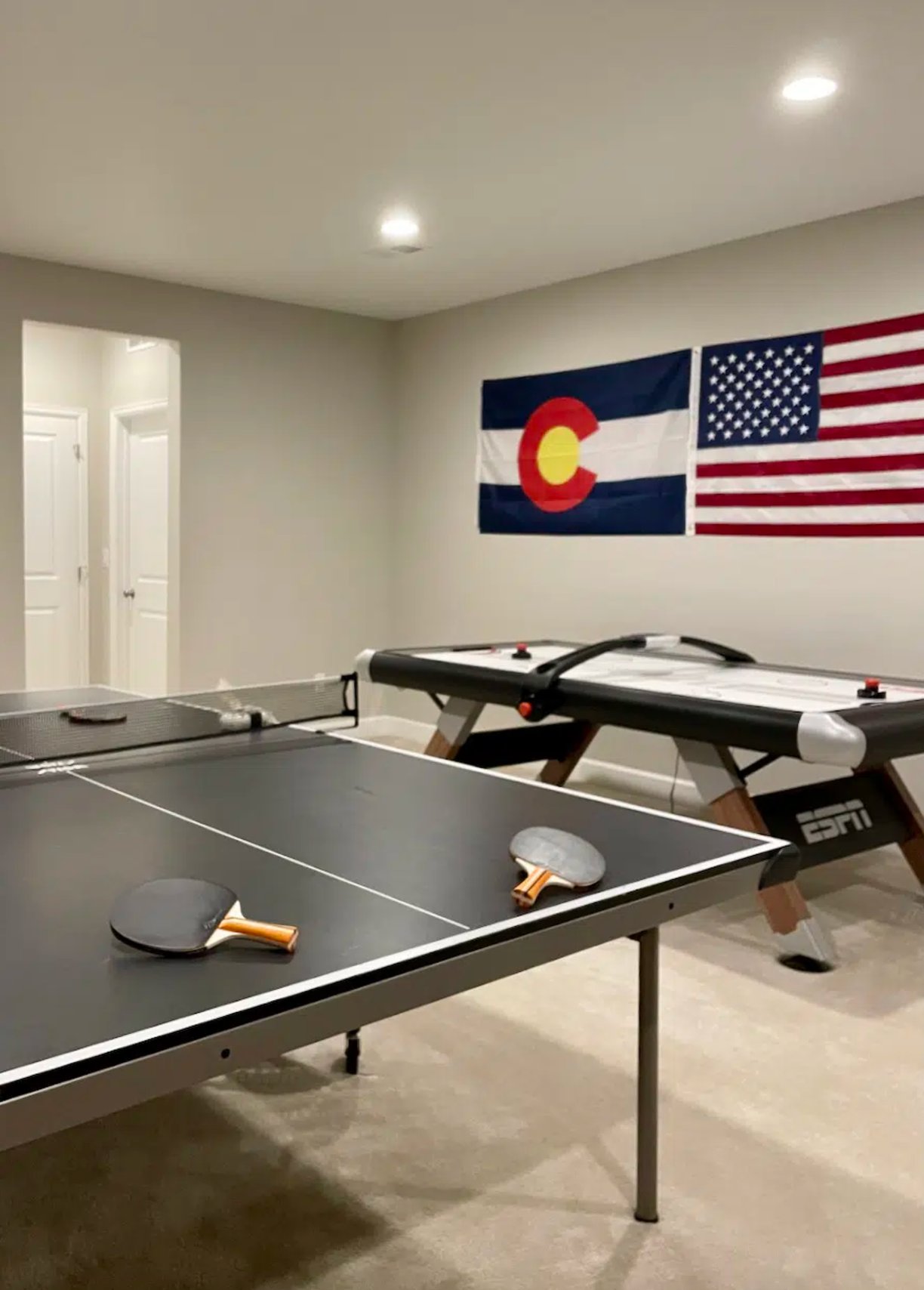
Agreeable Gray is a crowd favorite in the “greige” family (that’s gray meets beige). It can make windowless rooms feel surprisingly cozy.
Just one heads-up, though – you’ll want warm lightbulbs with this one. Cool lighting can make it look a bit dull and muddy, especially on cloudy days.
On paper, its LRV of 60 should make it pretty reflective. But in reality? In rooms without natural light, it can read a bit dark. If you’re after brightness, go lighter or make sure you’ve got plenty of artificial light to work with.
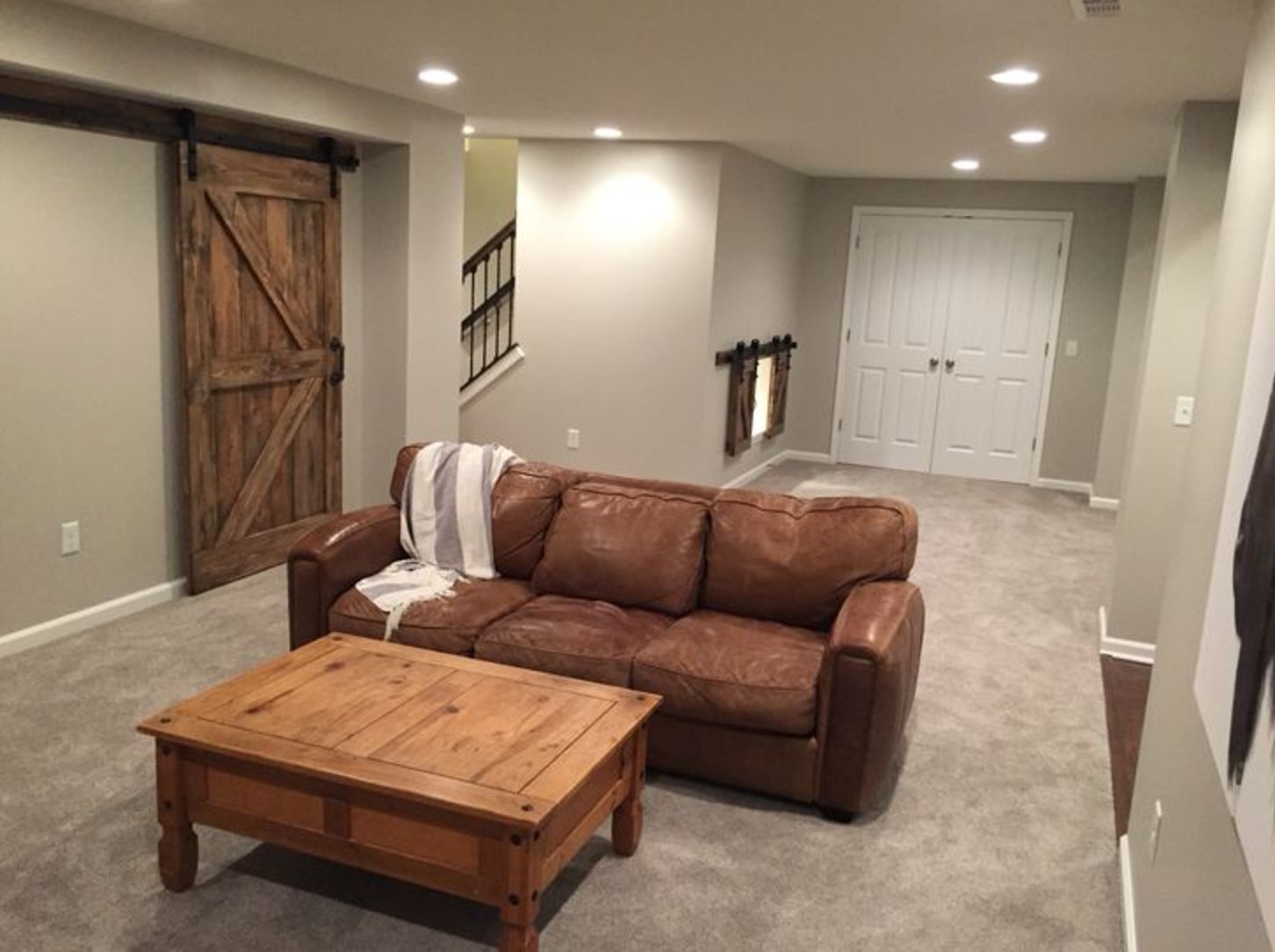
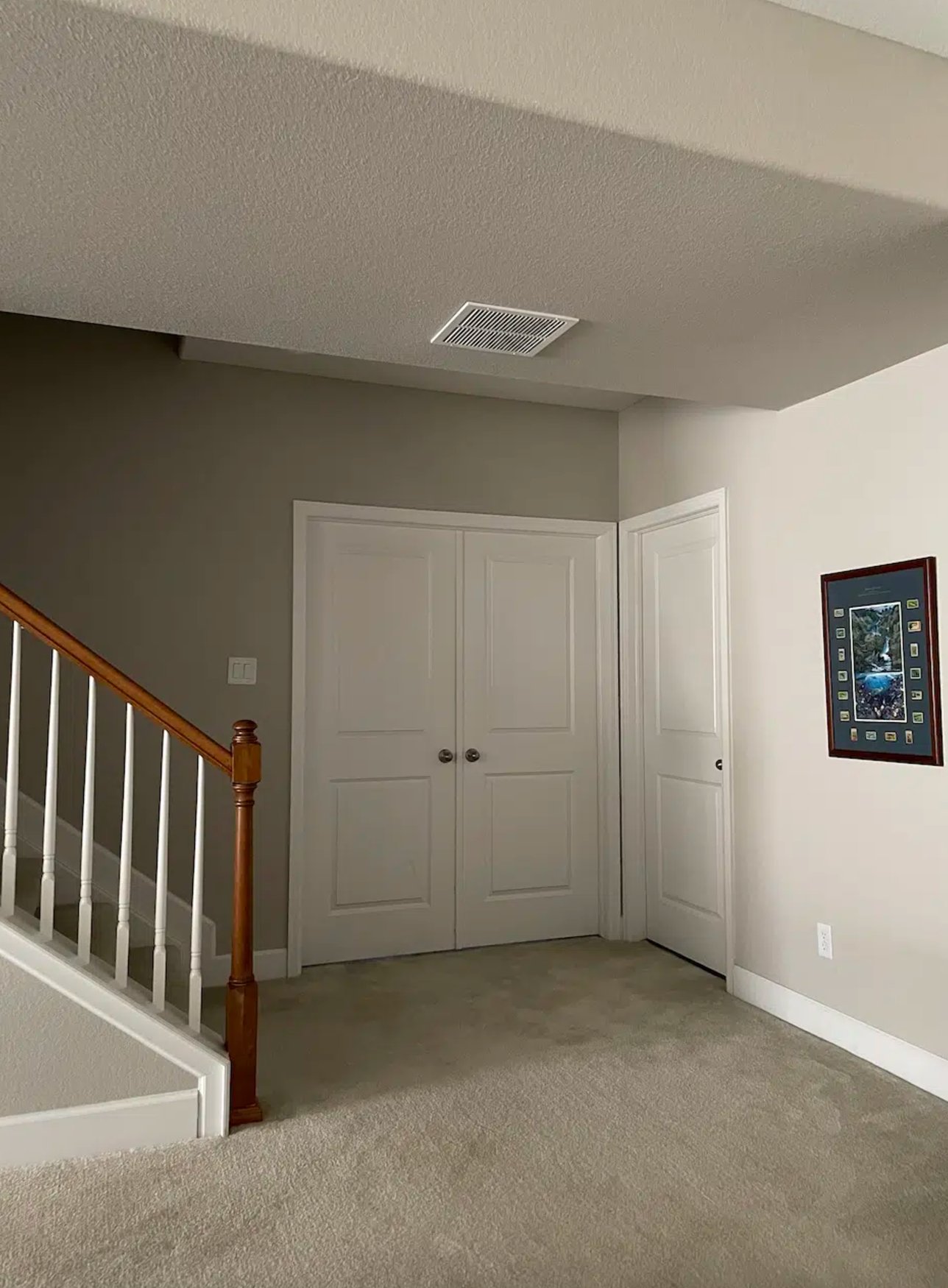
Here’s something interesting – Agreeable Gray has this sneaky green undertone. You probably won’t spot it in your basement, but it can pop up unexpectedly, depending on your lighting. That’s why I always tell people to test it on their walls first and check it throughout the day.
The best part? It gets along great with all kinds of materials. Since it’s warmer than your typical gray, your basement won’t feel like a concrete box. Pretty important if you’re planning to hang out down there regularly!
3. Sea Salt by Sherwin Williams

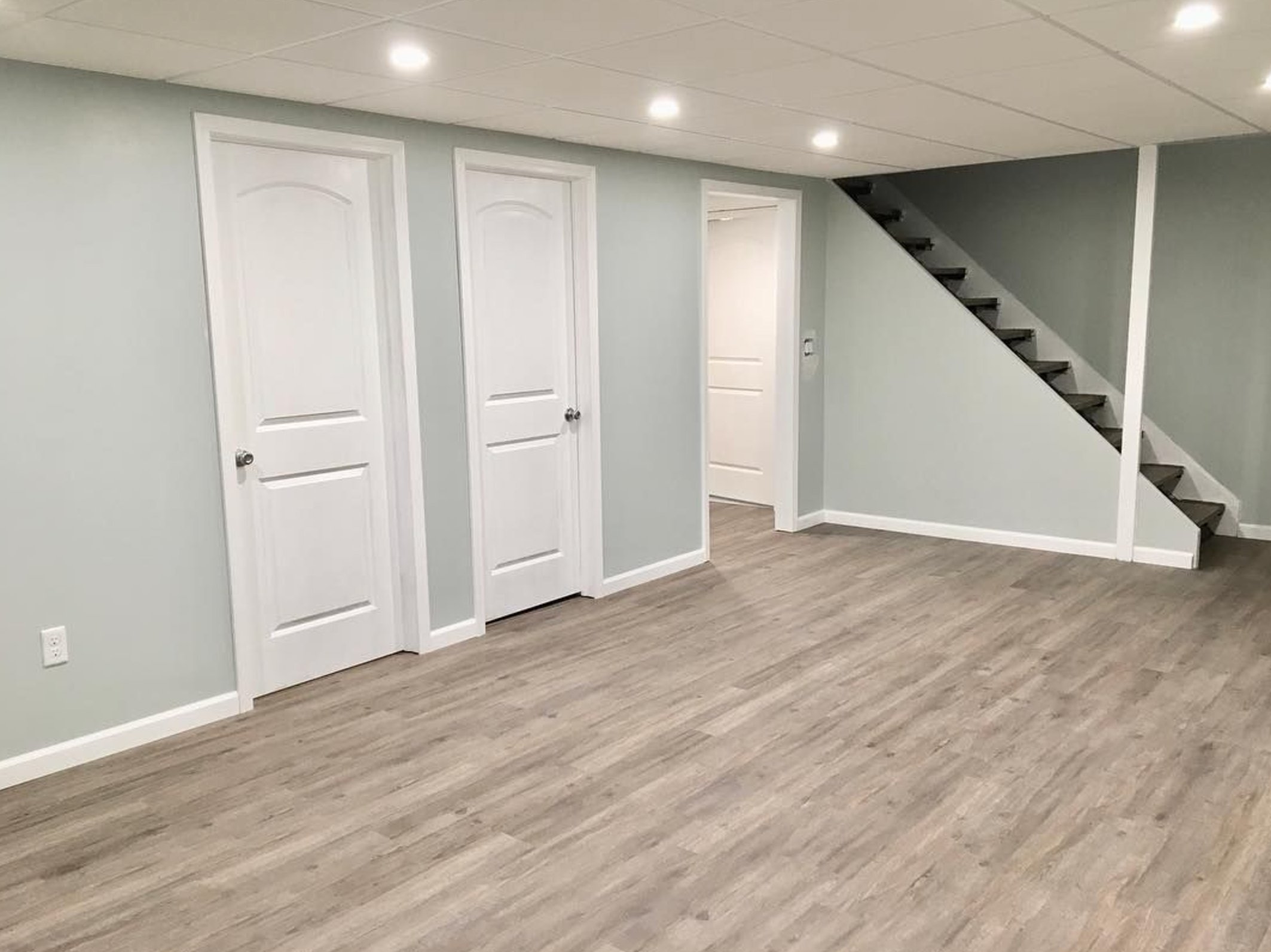
Let me tell you about Sea Salt – it’s like that friend who never quite acts the way you expect. You think you’re getting a gray-green, but sometimes it goes blue, and sometimes it leans more green – it keeps you guessing! It’s all thanks to this bluish-black pigment that likes to show different sides of itself in different lights.
It has an LRV of 64, so it’s pretty light but not so light that it washes out under bright lights.
In basements, you’ve got to play it smart with this color. It’s gorgeous and shows off all its personality when you’ve got decent lighting. It might get a bit moody in darker spots because of its gray base. Don’t worry, though – you’ll still get that beachy vibe, just a bit more toned down.
The cool thing is that it never completely loses its color and turns flat gray. There’s always a hint of something more there. And yeah, it might surprise you by turning noticeably blue, especially in north-facing spaces. But honestly? That’s what makes it so fun to work with!
4. Peppercorn by Sherwin Williams

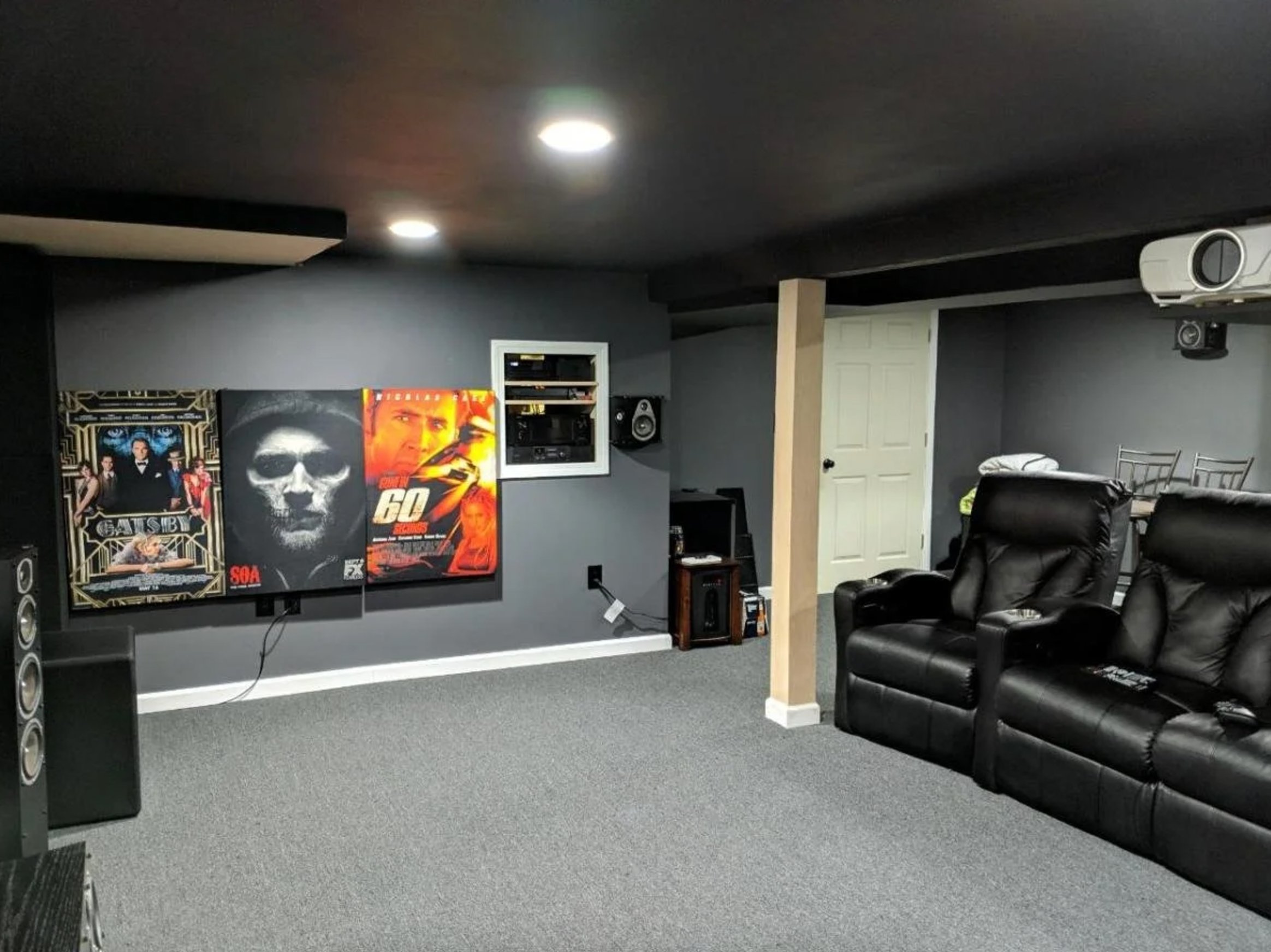
Peppercorn is a deep gray that shines in basement spaces. With an LRV of 10, it’s definitely on the darker side, but don’t worry – with proper lighting, it won’t turn your room into a cave. It’s impressive how it shows a touch of warmth in south-facing rooms while sticking to its true gray nature in north-facing spaces.
One thing I love about this color is how unpredictable it can be. Depending on your lighting and what’s around it, you might catch hints of green, purple, or blue in there.
Put it in bright light, and you’ll get this gorgeous contrast with white trim. In darker spots, it softens up to almost a soft black.
Just make sure you plan your lighting well – it’ll make or break the space. In a home theater setup (like in the photo) or lounge area, Peppercorn really helps create that sleek, modern vibe.
5. Mindful Gray by Sherwin Williams

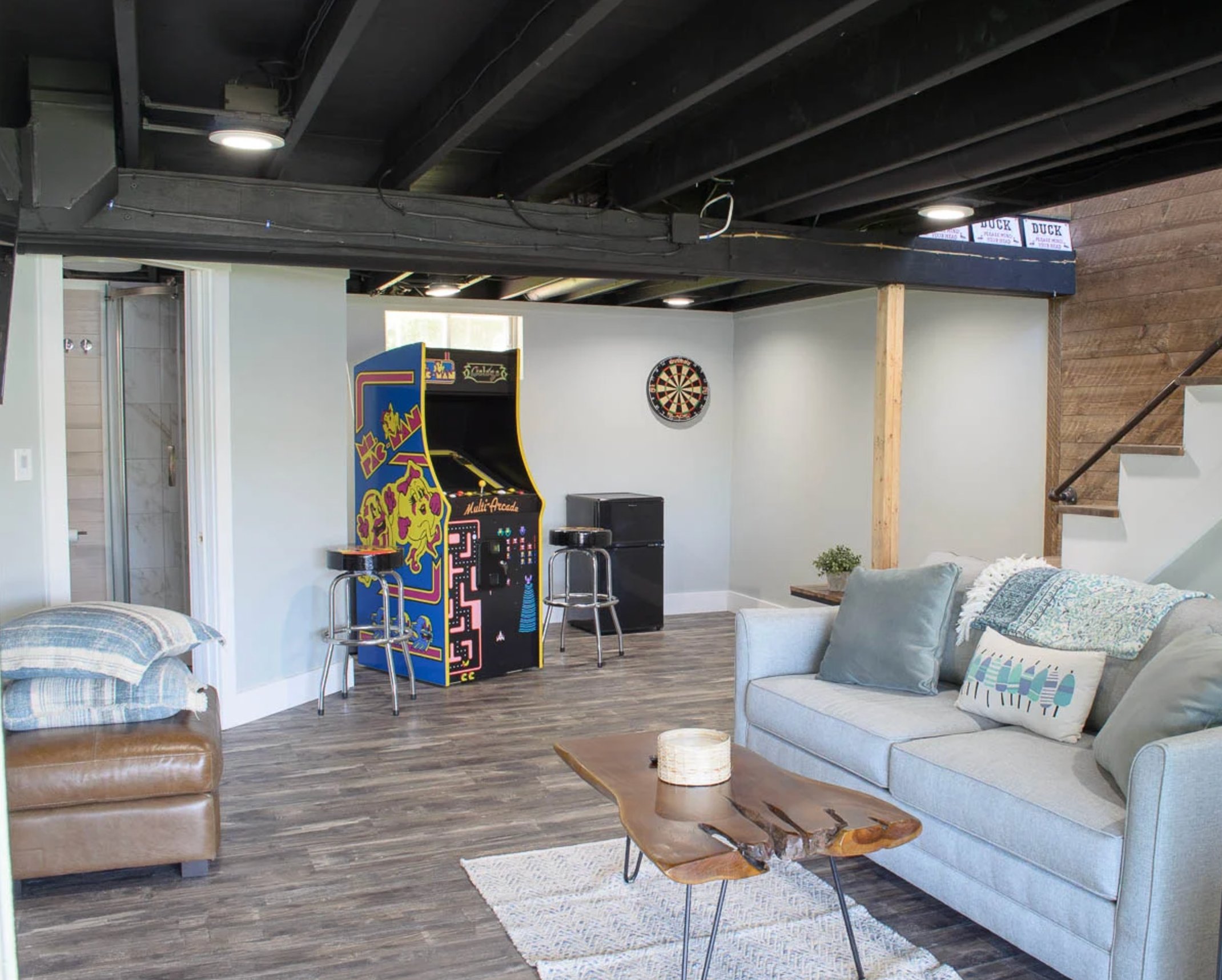
If you’re looking at grays for your basement, Sherwin-Williams Mindful Gray is one of the best options out there. It sits right in the middle with an LRV of 48, though you’ll want to think twice about using it in spaces that don’t get much light.
What’s cool about this color is how it changes with its surroundings – put it next to dark furniture, and you’ll see these subtle green and purple undertones pop up. Next to lighter pieces, it plays it more neutral. It really comes into its own in east-facing rooms, loving that morning light. And when you pair it with white trim, something like Pearly White, you get this perfect modern-but-cozy feel.
Mindful Gray is a solid bet if you want to turn your basement into a proper living space without getting too wild with color.
6. Manchester Tan by Benjamin Moore

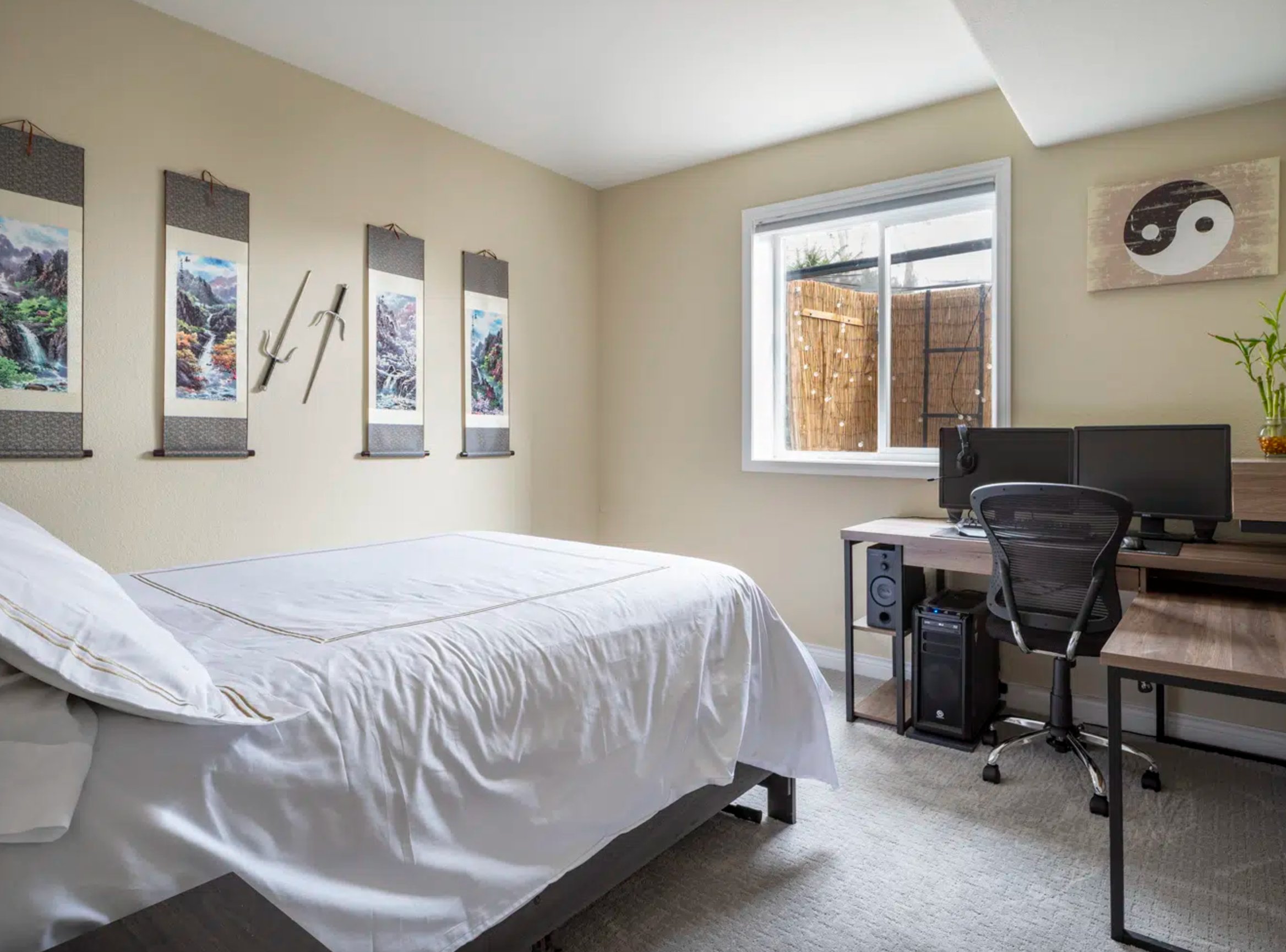
Manchester Tan is something special when it comes to basement beiges. It’s got more personality than your typical beige – warm but not too warm, with just the slightest hint of green hiding in there.
An LRV of 63.24 makes it bright enough to keep your basement from feeling dungeon-like.
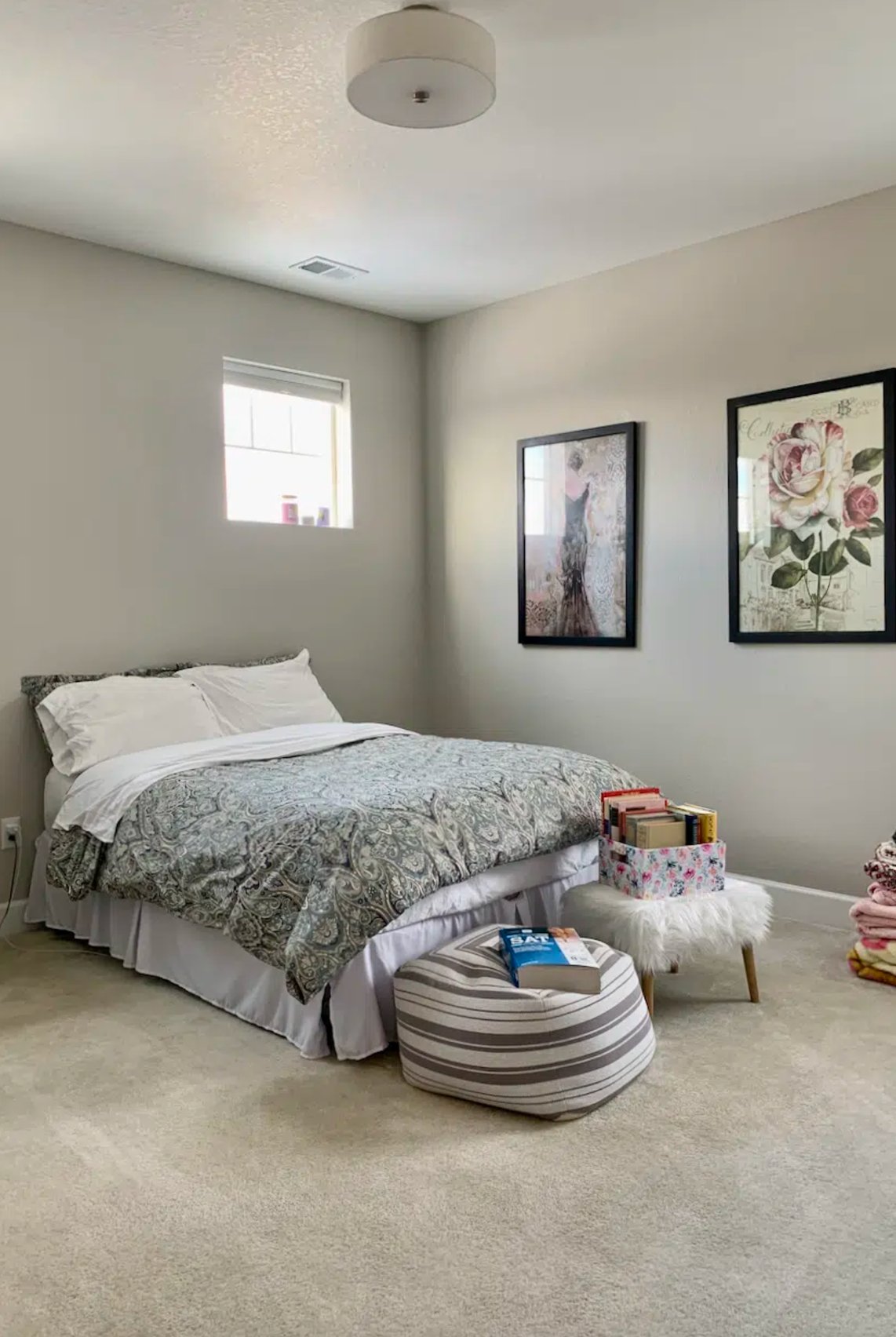
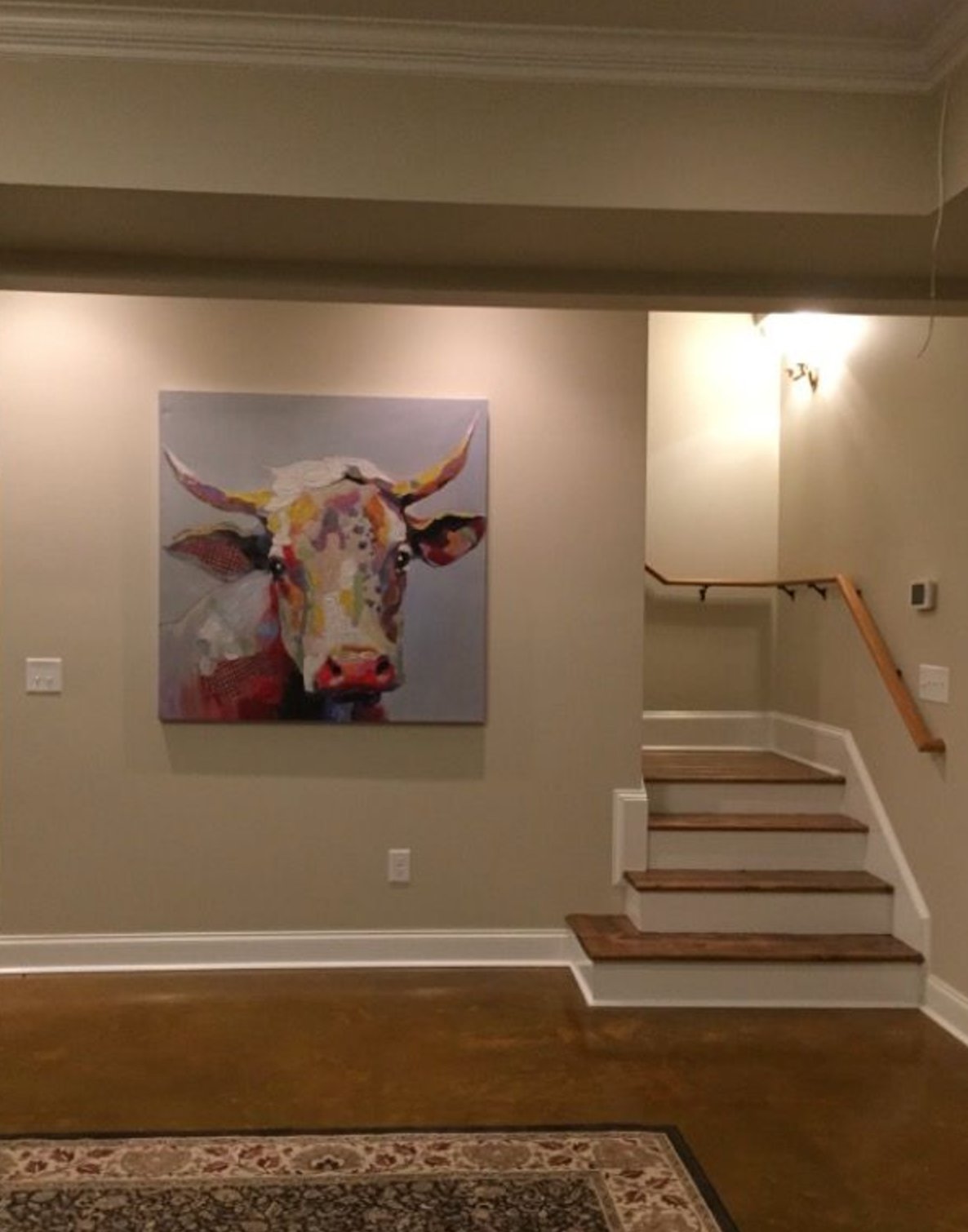
Good lighting brings out the best in Manchester Tan, but it holds up nicely in darker areas too. They’ve managed to tone down the yellow just right, so you won’t end up with those “banana walls” that make so many beige rooms look off.
It plays nice with warm trim and furniture, making it easy to pull the whole room together.
7. Stonington Gray by Benjamin Moore

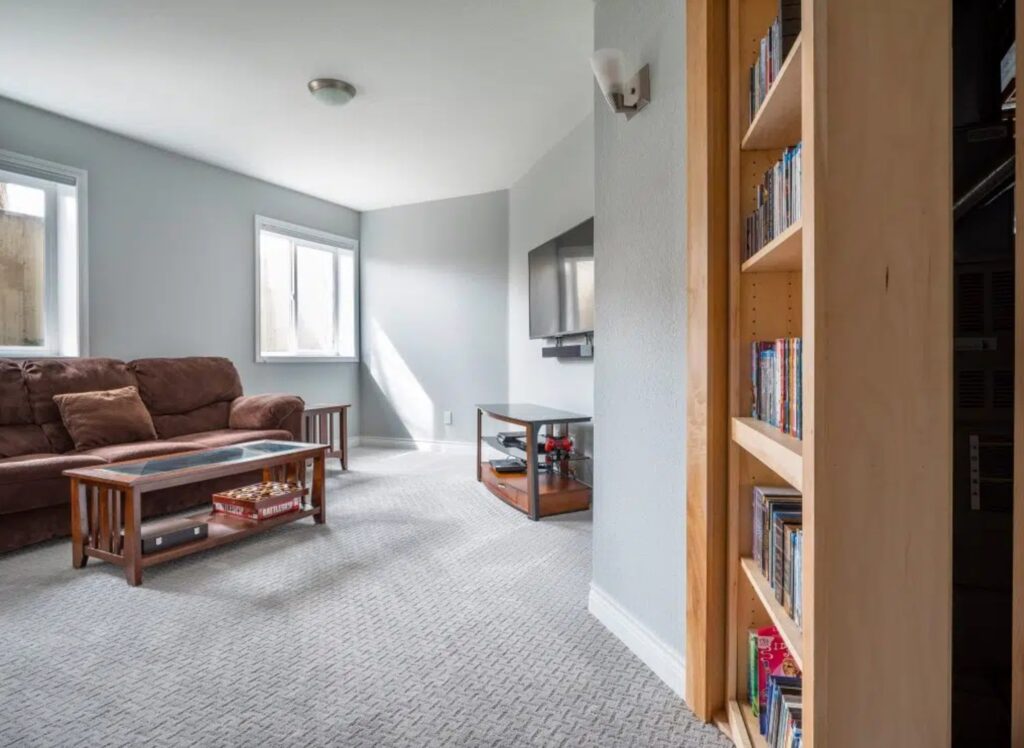
Here’s what’s interesting about Stonington Gray – it usually reads as your classic medium gray, but throw some cool lighting on it, and suddenly, you’ll catch this subtle stormy blue undertone.
It looks fantastic with dark wood (check out that basement photo above) and deep blues. What makes it great is that while it’s neutral enough to work as a base color, it’s got just enough personality to keep things interesting. You might even spot a hint of purple in north-facing rooms, especially when it’s next to white.
8. Pebble Beach by Benjamin Moore

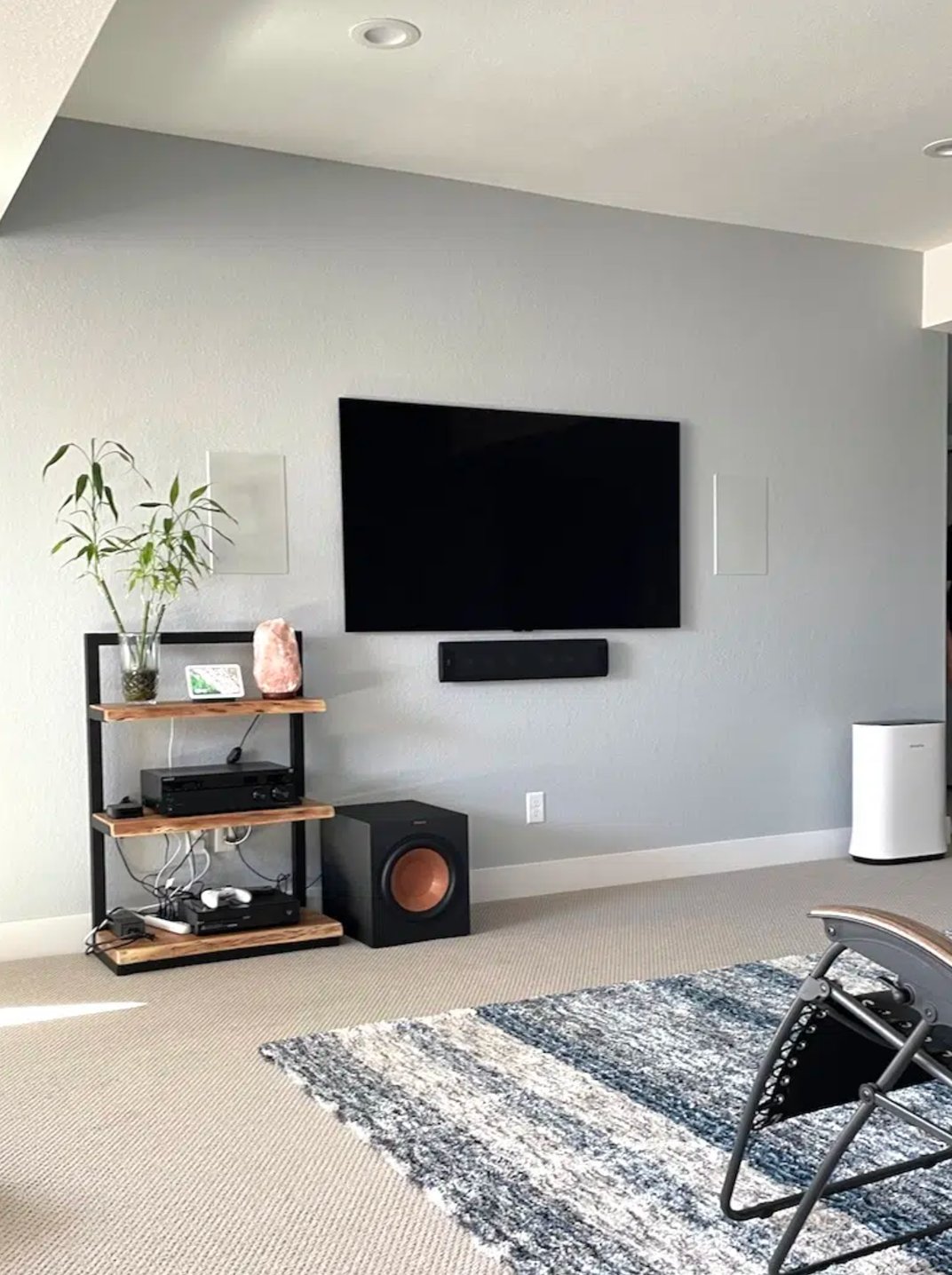
Pebble Beach by Benjamin Moore is this lovely cool gray-blue that really works in basements. Watching it shift is fun – more blue when the light’s bright, more gray in the shadows.
It’s perfect for basement spaces – light enough to make the room feel bigger, but it’s got enough depth to handle those darker corners. I particularly like how it behaves in western light – the warm afternoon sun gives those cool blue notes a nice balance.
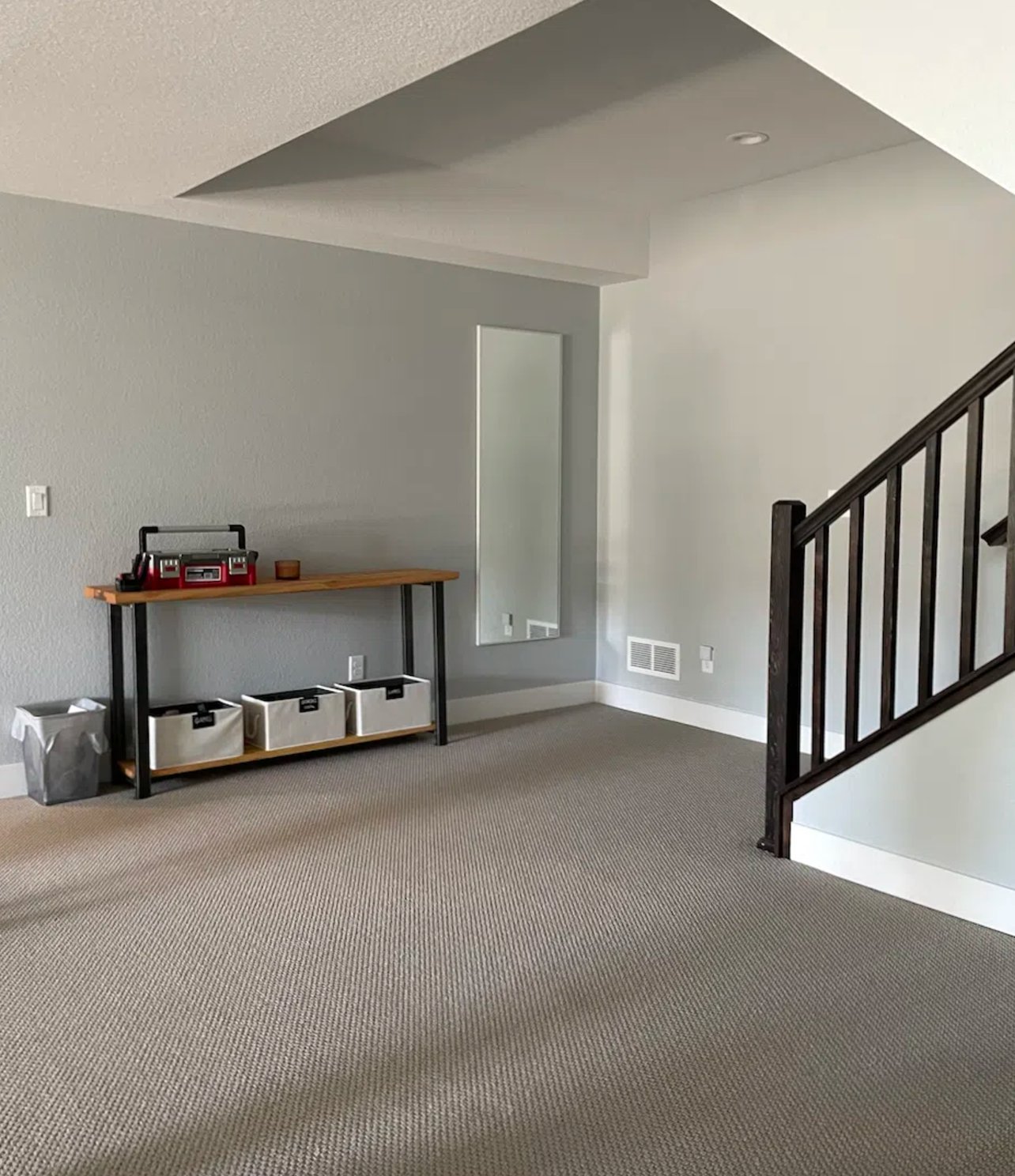
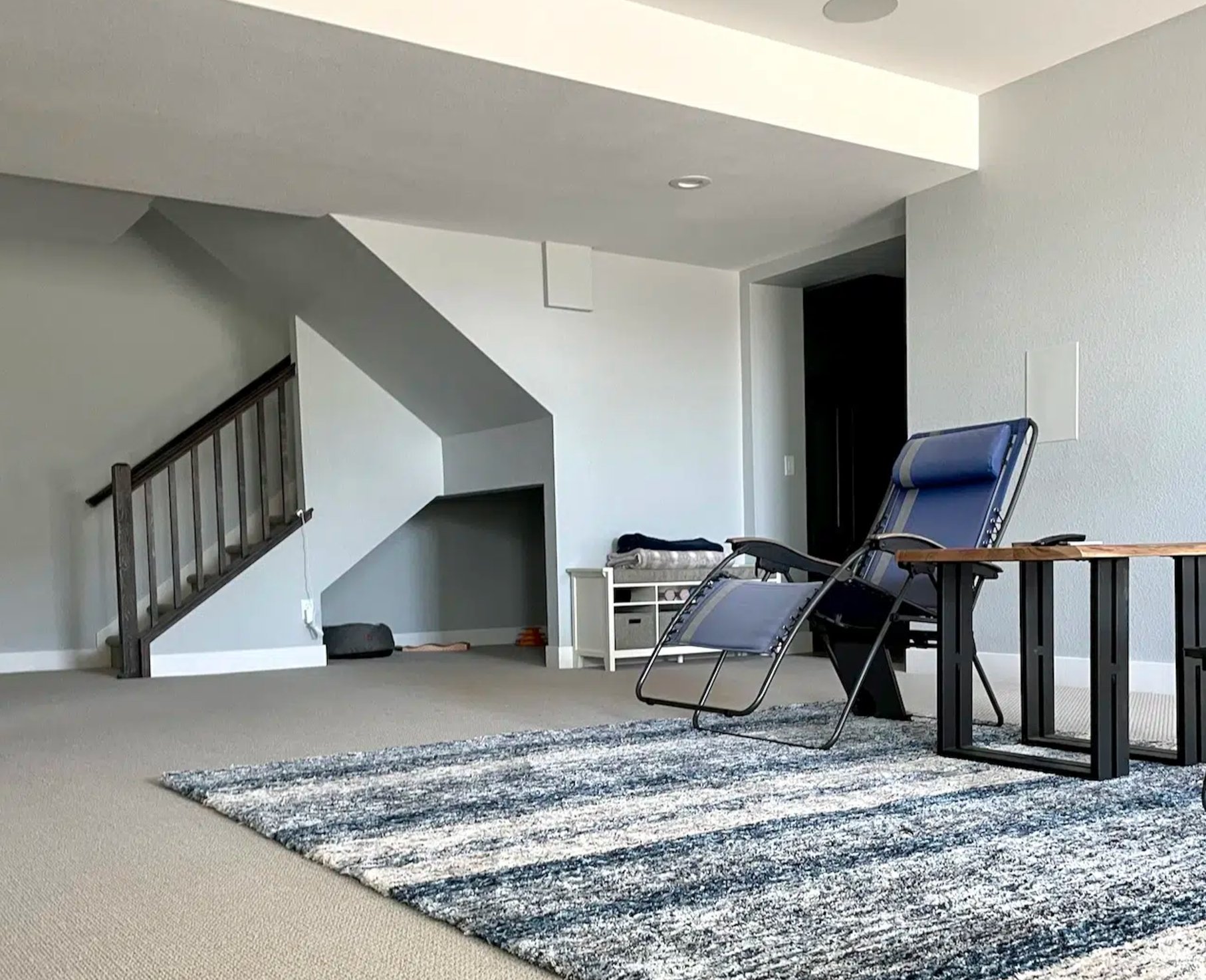
If you want to explore similar options, take a look at Passive by Sherwin-Williams or Silver Lake by Benjamin Moore – they give you pretty much the same vibe.
9. Abalone by Benjamin Moore

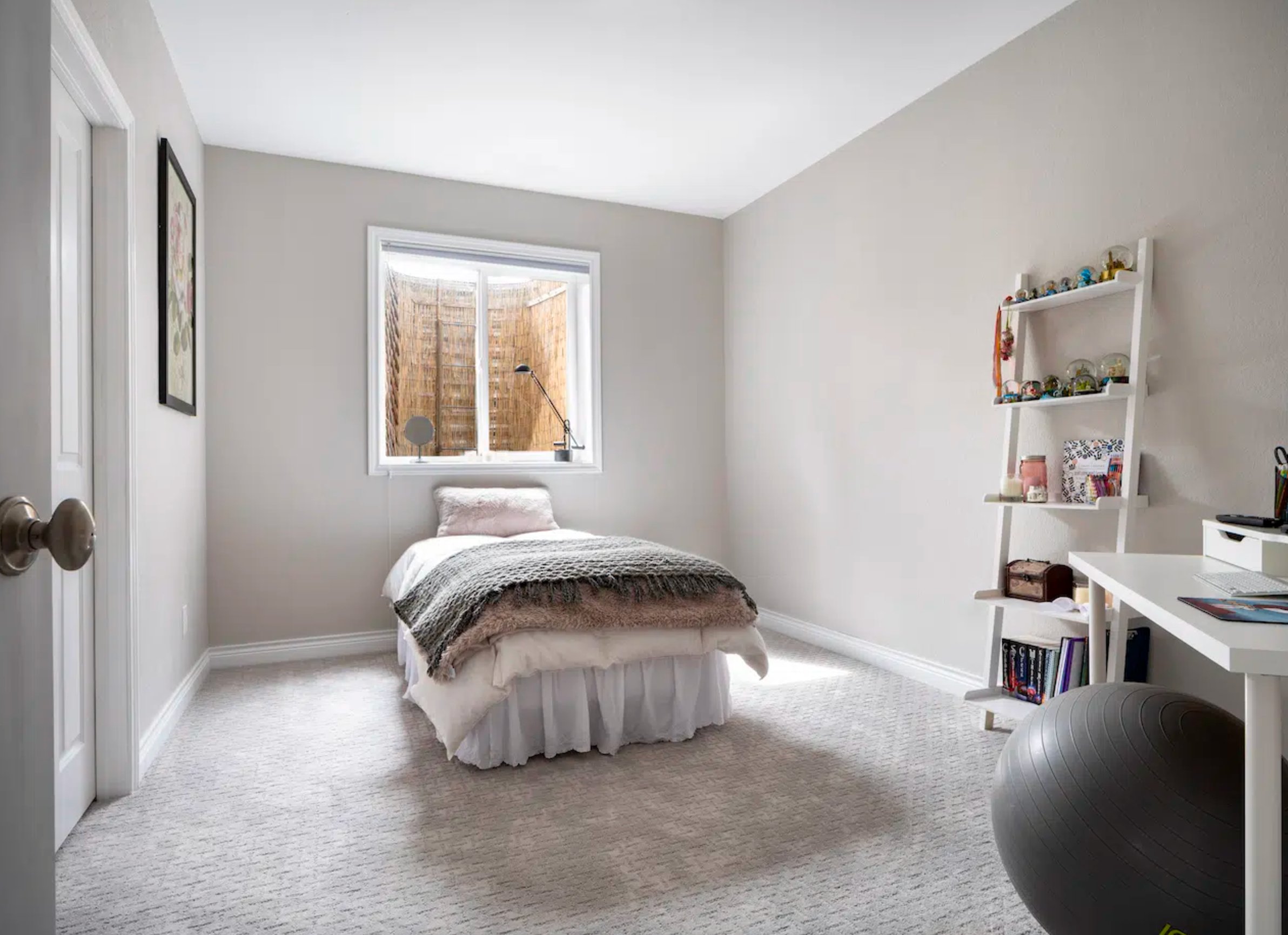
Abalone by Benjamin Moore is one of the most intriguing light gray shades, with just a whisper of mauve. It works like magic in basements with good natural light, bringing an incredible warmth to the space.
What’s really cool about this color is how it shifts throughout the day – it leans more gray in northern light while keeping its cozy feel, and in south-facing rooms, it plays nicely with taupe undertones.
I’d avoid using it in dark spaces – it can fall flat. But put it in a basement bedroom or office with big south-facing windows, and that’s where it shines – showing off that subtle softness and that barely-there purple undertone that everyone seems to love.
10. Slate Teal by Benjamin Moore

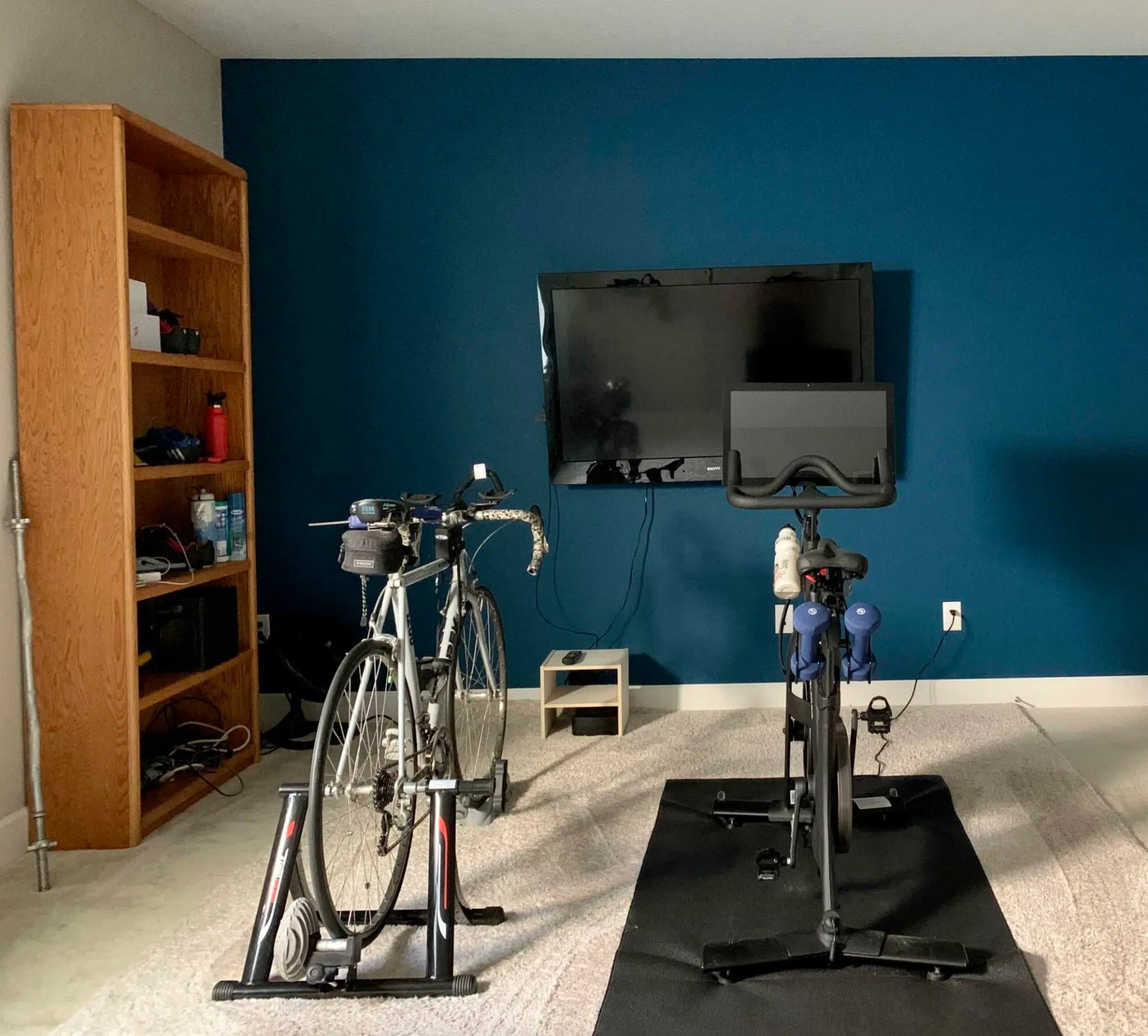
Slate Teal is this gorgeous blue-green that somehow looks fantastic even in basement spaces. Yes, it’s pretty dark with an LRV of 7, but it shows its true colors in rooms with decent lighting without going completely black.
The matte finish is where this color really comes alive – you get this incredible depth that you don’t see with eggshell, which can get a bit glare-y. Put it next to some neutral shades, and those green undertones will pop.
The funny thing is, even though it’s dark, Slate Teal doesn’t make spaces feel heavy or cramped – it’s actually one of those rare dark colors you can confidently splash on every wall.
11. Cloud White by Benjamin Moore

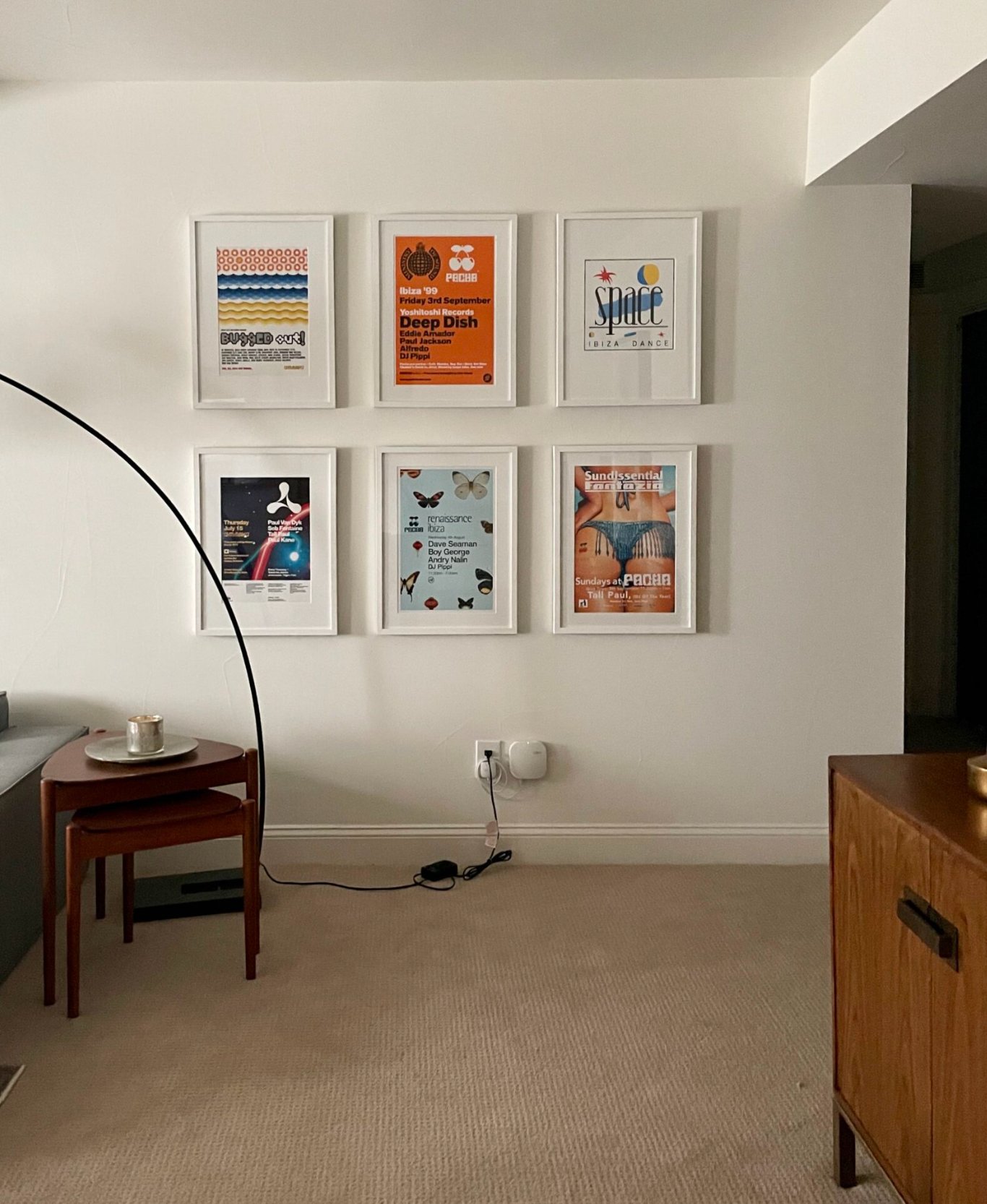
I almost have to laugh at how many times I’ve written about Cloud White – is this the fifth article now? But there’s a good reason – it’s seriously excellent for basements!
Most whites don’t cut it in basement spaces, but Benjamin Moore’s Cloud White does something special – it gets richer and more enjoyable. It has these warm taupe-beige notes without falling into that trap of looking yellow or too creamy, like many warm whites do.
Even in low-light basement situations, it holds up beautifully. And it’s a dream when paired with brick and wood – precisely what you want for a cozy basement vibe.
12. Muslin by Benjamin Moore

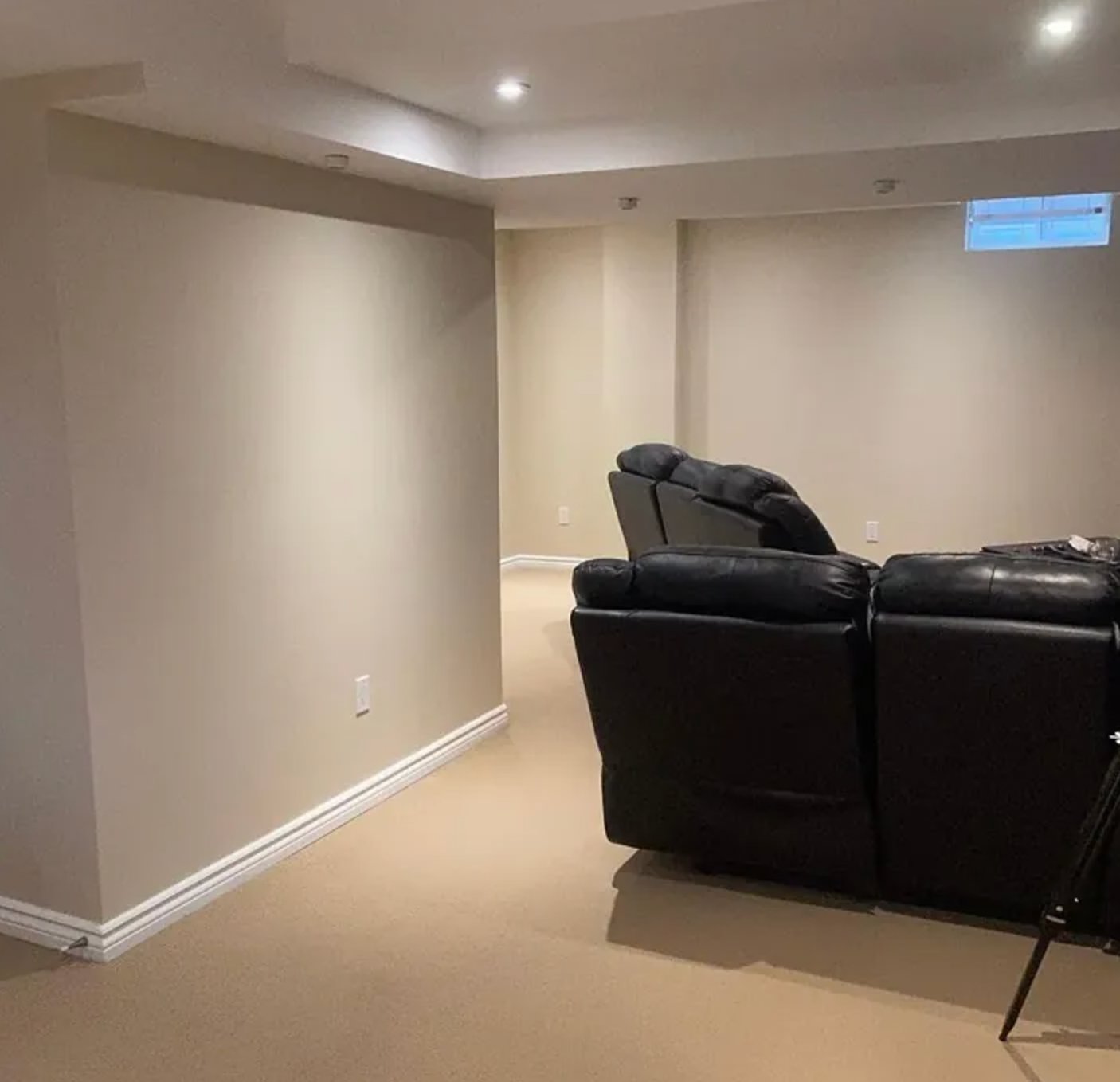
Muslin by Benjamin Moore isn’t your typical boring beige from the 2000s – this one’s different. It has a subtle pink undertone that brings a new level of coziness to basement spaces.
With an LRV of 66.54, it bounces light around nicely while keeping its personality intact. It works its magic in rooms with cool northern light – totally transforming the space. If it starts looking a bit washed out in brighter areas, a white baseboard trim usually does the trick.
13. Cultured Pearl by Sherwin Williams

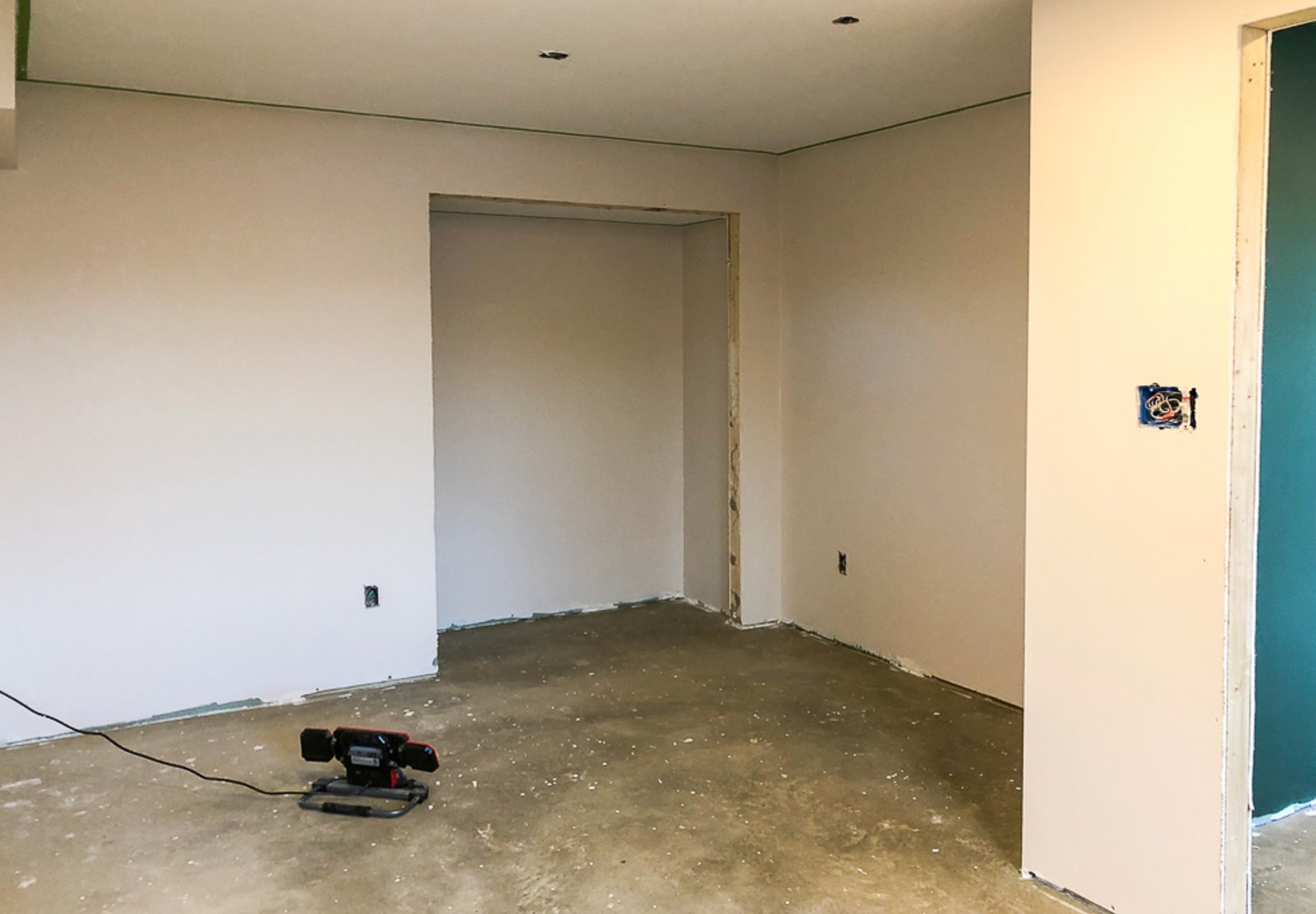
Cultured Pearl is special among whites – it’s got hidden red and purple notes that you might miss at first glance. Instead of going the typical cool white route, it brings a soft creamy undertone with just a touch of pink-purple – which makes it super versatile for different design styles.
It hits a sweet spot between warmth and brightness that basement spaces really need – you get that cozy feel while still making the space feel bigger. Plus, it stays neutral enough that you won’t have any trouble matching it with your furniture and decor pieces.

